| Article ID | Journal | Published Year | Pages | File Type |
|---|---|---|---|---|
| 3154099 | Journal of Oral and Maxillofacial Surgery | 2011 | 10 Pages |
PurposeThe previous decade has witnessed increasing emphasis on the technique of trans-sutural distraction osteogenesis (TSDO), a new and challenging procedure to reconstruct deficiencies in craniomaxillofacial bone. The purpose of this study was to determine if locally administered recombinant human bone morphogenetic protein-2 (BMP-2)/Poly(lactic-co-glycolic acid)/Fibrin sealant and recombinant human osteoprotegerin recombinant OPG fusion protein improves osteoblastogenesis and new bone formation by TSDO.Materials and MethodsThirty-two dogs were divided into 4 groups: control, BMP-2, OPG, or BMP-2 plus OPG. Two dogs from each group were sacrificed at 1, 2, 4, and 6 weeks after initiating the DO protocol. Immunohistochemical, histomorphometric, and electron microscopic assessments were performed to investigate the effects of BMP-2 or OPG induced by TSDO.ResultsThe animals demonstrated significant overgrowth of the maxilla (control, 19.5 ± 2.61 mm; BMP-2, 19.9 ± 1.47 mm; OPG, 18.3 ± 1.2 mm; BMP-2 + OPG, 20.5 ± 2.65 mm). Histologically, the palatine suture widened dramatically within 2 weeks after distraction. Osteoblast number, trabecular thickness, content of alkaline phosphatase, and integrated optical density of BMP-2 increased obviously in the BMP-2 + OPG group (P < .05).ConclusionsTSDO in growing dogs is a safe, well-tolerated technology. The study found that OPG alone did not improve bone regeneration, but that it acted synergistically with BMP-2 to increase recruitment of mesenchymal stem cells and led to a significant enhancement of bone formation and healing. The temporal pattern of BMP-2 expression is consistent with a role in the regulation of mechanical and biological interventions designed to promote bone regeneration.
